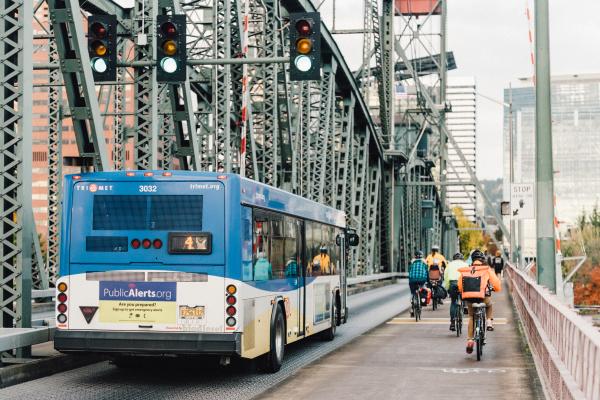Report Outlines How Public Transit Agencies Can Advance Equity

Access to high-quality public transportation can make communities more equitable by increasing access to critical opportunities such as employment, health care and healthy food, particularly for low-income individuals and people of color. A new paper published today in the Transportation Research Record identifies six broad categories of equity-advancing practices that reach beyond existing guidelines and could be widely employed by public transit agencies nationwide.
“Many of the established practices for understanding and advancing public transit equity focus on precise quantitative measurements that are disconnected from riders’ day-to-day experiences,” said Alex Karner, an assistant professor of community and regional planning at The University of Texas at Austin and the study’s lead author. “In transit, equity goes far beyond simply assessing how service is distributed. We wanted to lift up practices that agencies were using to create fairer and more just public transit systems.”
The report studied eight public transit providers in various cities across the country and identified six practices that can help ensure that public transit works well for those who need it the most. These are:
- Establishing advisory committees to provide more formal, regular and specialized channels for public input than can be achieved through traditional meetings;
- Partnering with advocacy organizations, which can overcome barriers to public involvement and include hard-to-reach populations;
- Incorporating equity into capital planning to ensure that transit vehicles, maintenance and system expansions equitably benefit population groups;
- Planning with other regional transportation agencies that are often a critical venue for equity-related conversations that cross regional boundaries, covering issues such as gentrification, housing affordability, commuter-oriented public transit and other issues;
- Using ride-hailing and microtransit solutions, where appropriate, to facilitate public transit use and reduce gaps in service; and
- Creating an equity culture by altering hiring, contracting and organizational practices to better weave equity principles throughout an entire agency.
In addition to establishing these broad categories, the paper assesses each method, offering insight into its limitations and opportunities by assessing real-world implementation as employed by the eight public transit organizations included in the report. Some of the highlights include the convening of a “Transit Equity Advisory Committee” by the Tri-County Metropolitan District of Oregon (TriMet) that successfully advocated for a reduced-fare program and decriminalized fare evasion; and TriMet’s subsequent creation of a dedicated Department of Equity, Inclusion and Community Affairs to assist with their equity-related goals.
“At the end of the day, transportation equity is about fairness,” Karner said. “There are many ways that public transit agencies can pursue this goal. Our key result is that the agencies doing the most in this space have made it their mission to incorporate equity into all aspects of their day-to-day operations. And they are the most likely to succeed.”
The transit organizations included in the study are Capital Metro in Austin; the Champaign-Urbana Mass Transit District; LINK Houston, an equity-oriented nonprofit organization in Houston; the Metropolitan Transit Authority of Harris County in the Houston Metro; the Massachusetts Bay Transportation Authority; the Massachusetts Department of Transportation; TriMet; and rabbittransit, a rural transit provider in southeast Pennsylvania.
The paper, co-authored by community and regional planning graduate student Kaylyn Levine, was completed in collaboration with Federal Transit Administration partners and a community advisory group assembled to provide input on the broader research effort. “Equity Advancing Practices at Public Transit Agencies in the United States” will be free to access for a limited time and can be read here: https://journals.sagepub.com/doi/full/10.1177/03611981211016861

